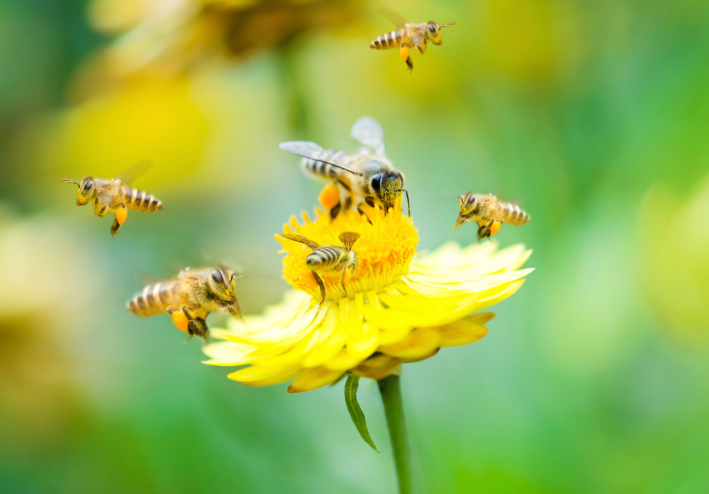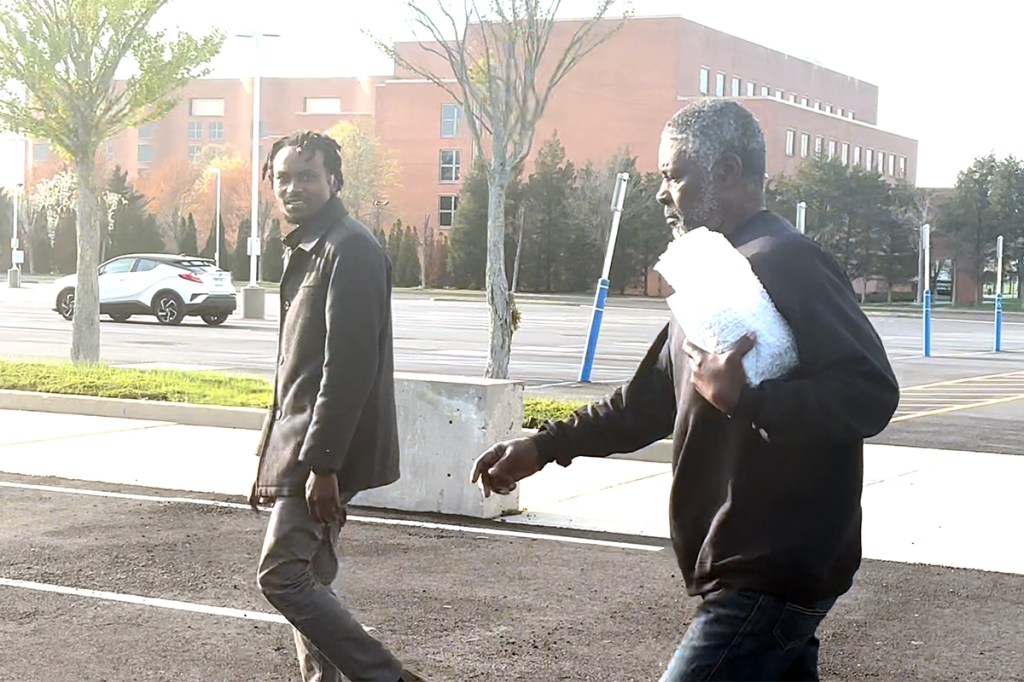View from the Garden: Bees in Our Bonnets: The Good and The Bad

I love to see bees in the garden. Honey bees, especially, since they are rare these days. Sadly, so many have succumbed to disease. There are still a huge number of bees and wasps in my garden. I am familiar with only a few, but get along
with most.
If you see a soft, fuzzy bee with yellow sacks on its legs, this is a honey bee. It works to feed the hive, and, in so doing, pollinates your flowers and vegetables, allowing them to fruit (as seeds are the fruit of flowers). I have worked in densely planted flower gardens and even inside shrubs full of honeybees and not been stung. If you hurt them, they will hurt you; otherwise you and they can work comfortably together.
Bumblebees are as mild-mannered as honeybees. They are larger than honeybees, and black with yellow fuzzy collars. They seem to roam the garden instead of flitting like honeybees, and buzz much louder. They are also pollinating your flowers.
Some kinds of wasps also pollinate, but many are meat eaters who also like sugar. The ones that I am familiar with have a black and yellow striped abdomen and a very thin body center. These are the ones that buzz around your ice cream and lemonade at the picnic—or even your steak. Wasps are more aggressive than bees, so I try to stay away from them and let them pass when they visit my area. Do not kill a wasp by “smashing” it, as it releases a pheromone that calls other wasps to you for discipline-stings. Supposedly, sliced cucumbers in several places on the table will repel them, and there are some non-toxic traps that one can put around the “people areas.”
There is one kind of wasp that is definitely bad—the ground wasp. They live in holes, in shaded places, even at the base of large grasses. I often find them by accident when I am working in the vicinity of this nest. They are small, and their sting leaves you first with a very unpleasant, intense pain that lasts several hours, and then an itch that lasts for even longer. Although one instinctively wants to swat them, they will release their pheromone, calling the army—and you don’t want that! Just get away quickly. In a fit of machismo, my husband has taken on a hive of these by spraying into the hole, at night, when they are quiet, with wasp killer. I recommend that you call an exterminator—and keep the dogs and children away from that hole!
My husband took a photo of a wasp-like insect last week. We discovered, with some research, that it is a hornet. This one had a yellow and black striped abdomen and red markings on its head and body. Hornets are easily agitated and have a bad sting. Move away from them calmly and carefully.
Carpenter bees are looking for places to make their nests at this time. The nests look like a perfectly round hole and are located inside wood, perhaps under your window. They are not aggressive.
If you see a large wasp (up to 2 inches) that is black with striking white markings, it is a cicada killer—not often seen. They kill cicadas and other large bugs to feed their young.
With the exception of ground wasps, none of the above bees or wasps have harmed me (except for that bumblebee I accidentally pinched). Their presence in the garden enhances my appreciation of my surroundings and reminds me that I exist within a fascinating system of other living things, and, with knowledge and care, I can share the world with them. (I haven’t discovered a way to coexist with the ground wasps yet—except to be fortunate enough to miss them in the garden!)
It is beneficial to bees and pleasant for the gardener to plant flowers that attract bees, and honeybees need all of the help we can give them. Single-petaled flowers are best, as they cannot feed from doubles. They like blue, purple, orange, white and yellow flowers, particularly those which are exceptionally sweet-smelling. The more flowers and bees, the better for me, and the greater the fragrance!



